On 12 December 2022, the International Soil Moisture Network (ISMN) moved from Technical University Wien (TU Wien) to the International Centre for Water Resources and Global Change in Koblenz, Germany. The data service has already received more than 3,500 data requests for freely available soil moisture data in this first year. It is operated jointly by Federal Institute of Hydrology (BfG) and the International Centre for Water Resources and Global Change (ICWRGC). A perfect symbiosis to the benefit of both parties, as the combined expertise of both institutions feeds into a network comprising more than 3000 measuring stations in 58 countries.
The soil moisture measurements, determined by special measuring probes in hourly resolution, are provided by co-operation partners from currently 77 global observation networks. The data is measured from the soil surface to a depth of around two metres. Nearly one third of the measuring stations are already sending their data to ISMN on a near-real time basis. The transmitted data is first converted into a standardised format. After scientific quality control it is then provided free of charge via the ISMN data portal.

ISMN: Soil moisture is important for plant growth and hence food security. Source: ISMN

A typical soil moisture measuring station. The probes measure soil moisture in different horizons.Source: ISMN
„BfG and ICWRGC are ideal hosts for ISMN“, says Dr Matthias Zink, Scientific Director of the Soil Moisture Network. “The demand for freely available large amounts of geodata is increasing every year. BfG already has years of experience in setting up and maintaining databases through other data centres, such as the Global Runoff Data Centre and the GEMS/Water Data Centre for global water quality data,” Zink continues. Furthermore, the addition of the global soil moisture database enables BfG to expand its free provision of geodata and environmental data through the institute’s open data strategy.
Soil moisture – a decisive variable also in terms of climate protection
The soil moisture recorded in ISMN refers to the water stored in the soil zone with roots up to a depth of approx. two metres, and is an important input parameter in hydrological and climate models. It has a major influence on the assessment of food security, on drought stress, i.e. the damage caused to plants by a lack of water, and is a key parameter in the management of global water resources. It also has a great impact on the production of climate-damaging nitrous oxide, including in agriculture. The global exchange of soil moisture data is therefore of vital interest to a large number of stakeholders from numerous areas of science, water management, disaster control and politics. “We do not only provide quality-assured data from the past, but also measured values in real time,” explains Matthias Zink.

Cake in the shape of the ISMN logo during operational launch festivities at ICWRGC/BfG.Source: ISMN
Historical development and transfer to Koblenz
The ISMN has been developed at the Department of Geodesy and Geoinformation at the Technical University (TU) Wien starting in 2009. Over the years, it evolved into a primary reference for satellite soil moisture, garnering a diverse user base. Despite its big success story, the ISMN faced operational challenges with short-term contracts and funding issued by the European Space Agency (ESA). Hence, the TU Wien looked for a new host that could overcome these challenges. The Federal Ministry for Digital and Transport agreed to fund this important environmental information infrastructure, including five scientific and operational staff members. ICWRGC and BfG were jointly assigned as the new host. The planning of the transfer took place throughout the years 2021 and 2022. On 12 December 2022, ISMN finally took up operations with ICWRGC at BfG.

Graphical overview of the data portal and background information on ISMN. Source: ISMN
Aiming for global coverage
The new ISMN team in Koblenz still has big plans. Further countries, particularly from Asia, South America and Africa, are to be added to the network in future. “We want to expand our range of data so that we can offer soil moisture data from almost all climatic and geographical zones in the future,” explains Matthias Zink. To achieve this, ISMN is striving for active cooperation with international organisations such as the World Meteorological Organisation (WMO) and the Food and Agriculture Organisation (FAO). ISMN data already supports the Global Climate Observation System (GCOS), the Global Terrestrial Network Hydrology (GTN-H) and the Global Energy and Water Exchange Project (GEWEX).
Further Information
Contacts: Dr. Matthias Zink, Dr. Tunde Olarinoye



